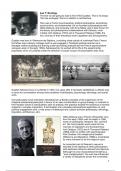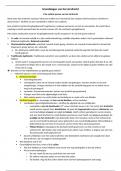Resume
Summary Architecture, theory and criticism: chapter 7: Ecology
- Établissement
- Katholieke Universiteit Leuven (KU Leuven)
In this document, you can find a summary of chapter 7: Ecology that Gideon Boie has given in the lessons "Architecture, theory and criticism". I took notes in class, each with accompanying images. This is a summary of my notes with important references/definitions etc.
[Montrer plus]




